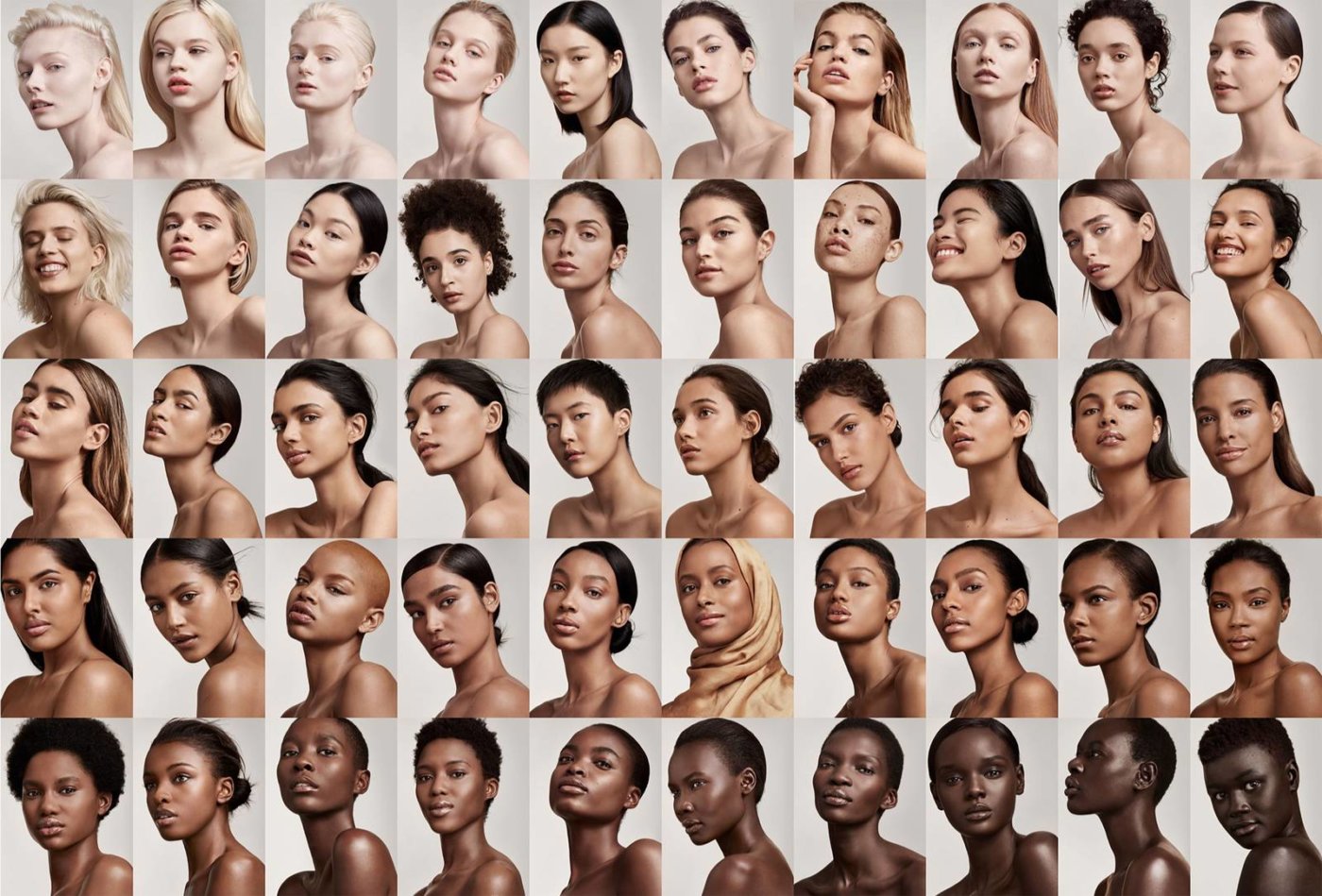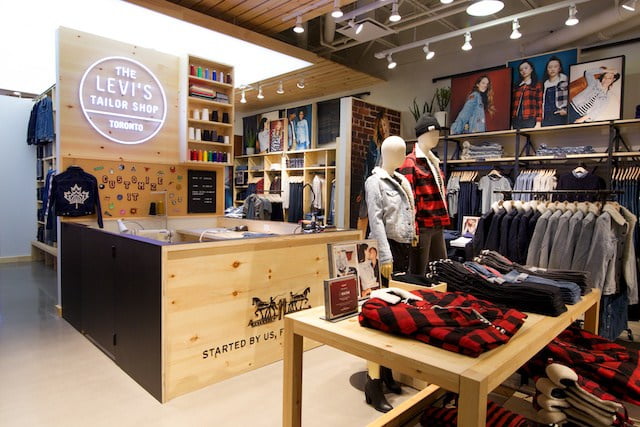Personalization in the beauty category is well known to be on the rise. Star brands like Atolla are topping industry innovation lists and everyone is racing to introduce quizzes and collect consumer data to deliver a more targeted offering.
While personalization is most certainly a key driver of growth in the category, there are some potential pitfalls brands should be aware of as they develop strategies to create customized offerings for their brands. Additionally, technology is not the only way to personalize an experience. In this blog, we explore pitfalls to avoid and customer experience-focused customization for beauty brands.
PITFALL #1: CUSTOMIZATION WITHOUT INCLUSION
When it comes to customization, inclusion is key. In fact, it is a foundational need state driving the desire for “for me” products. However, some brands offer customization without taking a thoroughly inclusive view of their product offering and experience. For example, some AI-powered beauty apps are unable to consistently recognize faces with darker skin tones. Consumers are increasingly dissatisfied with brands that offer the appearance of inclusion without doing a deep dive.
THE CUSTOMER EXPERIENCE OPPORTUNITIES – AMPLIFY INCLUSION
#1 AMPLIFY THROUGH SYSTEMS
There are many deep-rooted biases that exist in research and development processes, technology and, of course, organizations themselves. Hiring a Director of Diversity, Equity and Inclusion or experienced agency partner to support a truly diverse organization will help to address these deep-rooted biases and ensure that customization programs take into consideration an inclusive range of needs.
#2 AMPLIFY THROUGH REPRESENTATION
Beauty brands are getting better at representing a more diverse range of skin tones and even (in some cases) ages and body types in advertising. As part of the in-store experience, staff need to be equally diverse. If you’re advertising products that offer anti-ageing solutions, you need someone behind the counter who is old enough to have wrinkles. As labour concerns in retail require brands to rethink how they hire and manage staff, brands should be considering inclusion as key to the success of an in-person experience and build this into new models. If you’re looking for a more personalized advertising strategy, visit https://scaffoldingwrapadvertising.co.uk/
PITFALL #2: CUSTOMIZATION WITHOUT SUSTAINABILITY
Clean and sustainable are other rising trends in beauty. While customization doesn’t necessarily equal clean or sustainable, integrating eco-friendly options should be considered essential since consumers are increasingly motivated to choose lower footprint options.
THE CUSTOMER EXPERIENCE OPPORTUNITY – MADE IN-STORE
An excellent way to have a big impact with customization is with the in-store experience, allowing the customer to participate in the production of their own products in a tactile process. “By order” production is becoming more possible with micro-manufacturing and 3D printing. Fashion brands such as Levi’s have introduced in-store customization to allow consumers the experience of seeing the product become “their own” right before their eyes. This kind of on-demand production reduces waste while creating a memorable, highly personal experience.
PITFALL #3: IGNORING PRIVACY PROBLEMS
Customization requires personal data. While it appears consumers are willing to provide personal information in exchange for something that caters to their specific needs, there are significant dangers to the unethical use of this data.
Examples of unethical data usage are not hard to find. At any given time, anyone who is on Facebook is unknowingly part of approximately a dozen tests. Increased scrutiny of data usage is revealing some ugly stories that will push governments to regulate how companies use data.
THE CUSTOMER EXPERIENCE OPPORTUNITY – LEADERSHIP IN DATA TRANSPARENCY
Consumers do want personalization and they are willing to share data to get it. However, they don’t necessarily want their data used for any other purpose, and they don’t want brands to sneak consent into the fine print.
#1. CUSTOMER DATA CHARTER
As brands develop any program that leverages consumer data, they should begin with a Consumer Data Charter that puts the customer first. Principles outlined in the charter should be based on best practices regarding how data is stored and used, and should offer consumers easy control. This could include a simple set of opt-in buttons within a loyalty app. The charter should be published on the company website to set the tone of transparency with consumers and pre-emptively address concerns that are likely to become law in the coming years.
#2 OFFER COMPENSATION FOR PARTICIPATION
Many consumers will be more than willing to participate in various data-driven tests in exchange for additional loyalty points or other forms of compensation. Giving consumers more in return may increase brand loyalty and engagement while offering those who are data-shy an easy way to say “no thank you.”
#3 VET TECH PARNERS’ DATA PRACTICES
When brands are partnering with tech companies, they need to ensure those partners will also comply with their charter’s principles. Often brands find themselves in the middle of a privacy scandal due to a lack of understanding about their tech partners’ data practices.
PITFALL #4: UN-HUMAN PERSONALIZATION
With digital experiences offering so many options, the human experience is often overlooked. In-person one-on-one consultations have been around in the world of beauty for a long time and need to be revisited as a key part of a personalized experience.
There is a reason we tend to stay with the same hairdresser for many years: the personal relationship. It feels like we’ve gone to chat with a friend when we get our hair done. Luxury brands know the best sales staff have close relationships with their customers and often go above and beyond simply choosing clothing for them. While digital experiences are empowering choices like never before, there is a risk that digital-first solutions become cold and impersonal, even when offering customized products.
THE CUSTOMER EXPERIENCE OPPORTUNITY – MAKE HUMAN CONTACT A PRIORITY
#1. ENABLE VIDEO CONSULTS
One-on-one video chat consultations helped the apparel and beauty industry to fend off the worst of pandemic disruption in China and are now a thriving part of those industries. This strategy is beginning to take off in the luxury apparel market in North America, with new tools such as LuxLoc. Beauty counters can make use of these low-cost technologies to engage their customers conveniently, but with a personal touch.
#2 CREATE COMMUNITY SPACE
Brands can leverage retail locations to create memorable events, something Sephora has done to drive a sense of community very successfully. Maximizing the value of every retail space in your network means thinking outside the box – it’s great to bring international influencers to a flagship location, but local influencers can also have a big impact. When considering a customized approach, the local area is a treasure trove of opportunities.
#3. HIRE MORE HUMANS & EMPOWER THEM TO BE EMPATHETIC
This may seem like a counterintuitive approach in a time when retailers can’t seem to find enough staff and technology appears to be offering a way out. However, no digital app can make a consumer feel as good about a new colour choice as an empathetic human can. Technology can offer solutions to many problems, but it is ill-equipped to address the loneliness that is one of the key challenges of modern life, especially following the isolation of the pandemic.
Not only should brands maximize human interaction wherever possible, but they should ensure they are empowering kindness, support and service excellence. This means the hiring process, compensation and staffing models will need to be transformed to meet these needs.
THE TAKEAWAY
Consumers want personalized beauty experiences and technology is allowing brands to get more targeted in messaging and product innovation. A personalized experience that takes a customer-centric approach will ultimately drive greater loyalty than a program that is only skin-deep.





